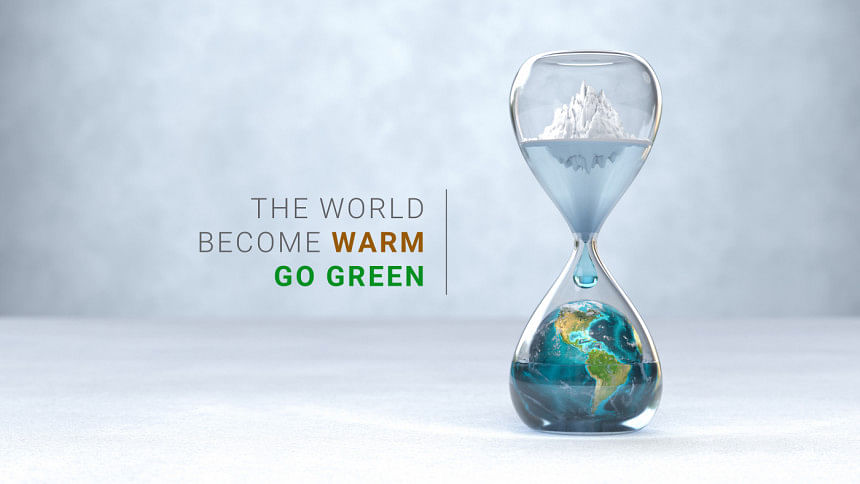Dhaka: The Urban Heat Island of Bangladesh

As the world is currently facing the challenge of climate change, it is crucial to address the adverse effect of urbanization on our environment. Surely, urbanization is the symbol of modernity and advancement. But unplanned urbanization causes many environmental issues such as rising temperatures. As we celebrate World Environment Day, Concord is taking a closer look into the urbanized capital of Bangladesh, Dhaka.
The population of Dhaka is increasing rapidly and the demand for living places is also increasing, resulting in the unplanned construction of the buildings. Because of this, the people of Dhaka face a unique phenomenon named the heat island effect.
What is the Heat Island Effect?
The heat island effect happens when cities become significantly hotter than the surrounding countryside. The primary reason for this temperature disparity is the mass number of concrete buildings, asphalt, and other surfaces in urban areas that absorbs heat. These heat-absorbing materials absorb and trap heat that creates spots where temperature soars. As a result, energy consumption is increased, raising health issues and other environmental challenges. Dhaka's urban landscape is full of concrete jungles and materials that absorb heat. So, on a hot summer day, the temperature is already high but the heat island effect increases the temperature in the urban hot spots with trapped heat.
Some major causes of the Heat Island Effect:
- Urban Infrastructure: Most of the infrastructures in Dhaka are built with concrete, asphalt, and dark surfaces which are known for absorbing heat during the day and radiating heat during the night. This process, known as thermal radiation, significantly contributes to the higher temperature experienced in the city area, even at night times.
- Insufficient Green Space: Because of urbanization and population demand, a lot of unplanned buildings are being developed. As a result, there are insufficient green spaces available in city areas. Trees, parks, and vegetation play a vital role in natural cooling, and evapotranspiration and provide shade.
- Building Design: Many buildings in Dhaka have poor orientation and inefficient ventilation. The air cannot pass through which tends to trap more heat inside. Buildings with dark surfaces also absorb more heat creating a heat-trapping environment that contributes to the heat island effect.
Real estate companies hold a crucial position in fighting the heat island effect, as the materials and planning for a project have significant importance on the environment. Concord Real Estate & Development Ltd serves as an excellent example, dedicated to creating cool and sustainable urban spaces through innovative solutions and sustainable practices. The company focuses on several aspects during the construction of the projects to foster a healthier, more comfortable environment for all. For its contribution to environmental protection and pollution control, Concord has won the National Environment Award-2020. Here is how Concord is fighting against the heat island effect and brought effective solutions to reduce and prevent the Heat Island Effect:
- Green Roofs: Concord is proactively taking steps to combat the heat island effect by installing green roofs on buildings. Green roofs can absorb heat and act as insulators for the building. It also uses evapotranspiration to cool the air around the building.
- Green Spaces: Along with green roofs, Concord is also committed to creating more green spaces in other parts of its projects. These trees, grass, and plants offer shade and keep the overall temperature around the building much cooler.
- Smart Building Design: Concord prioritizes sustainable building design. By incorporating insulation on the roof, improving ventilation, and proper building orientation, heat absorption can be minimized and also helps maximize energy efficiency.
- Lighter and Coller Surfaces: Most of the projects done by Concord feature light-colored or reflective materials on the exterior, pavement, and other parts of the building. These surfaces reflect the sunlight so that less heat is absorbed, helping the area stay cooler.
- Tree Planting: Trees are natural air conditioners and that is why the projects are strategically located so that the building has trees around it. This is a great addition to cool the surroundings and it also adds beauty to the cityscape.
- Involving the Community: To reduce the heat island effect, the community needs to be involved as well. Raising awareness about the heat island effect and encouraging the community to plant trees, maintain green spaces, and energy-efficient practices.
As we observe World Environment Day, we should unite together to fight against the heat island effect to make Dhaka cooler and greener. Companies like Concord are already taking initiatives to build a greener environment for the people, other companies should also take the step to actively fight against this phenomenon to combat the rising temperatures, creating a city we can be proud of for generations to come. Together, let us strive for a city that prioritizes sustainable practices and sets a standard for urban development.

 For all latest news, follow The Daily Star's Google News channel.
For all latest news, follow The Daily Star's Google News channel. 



Comments